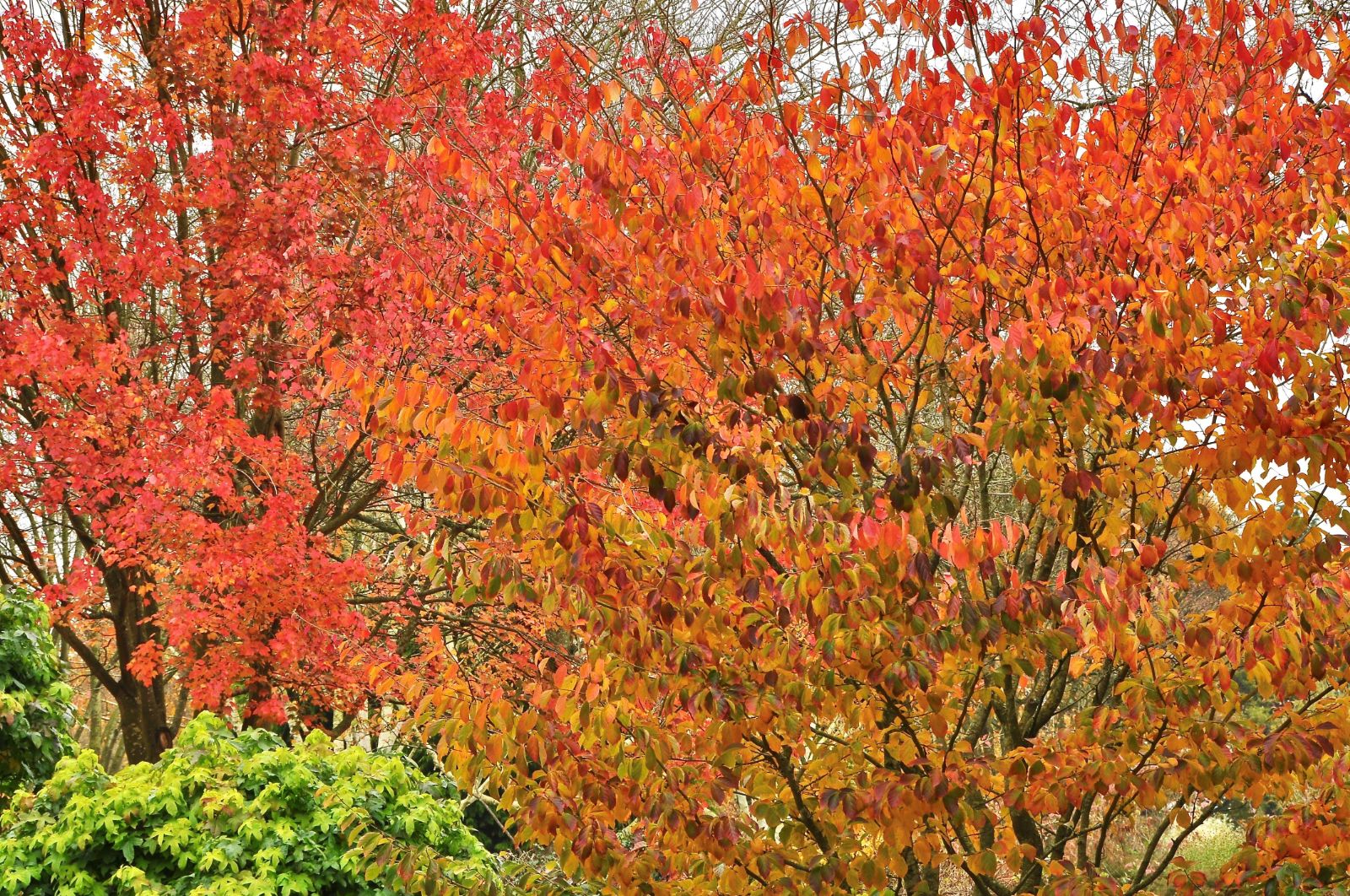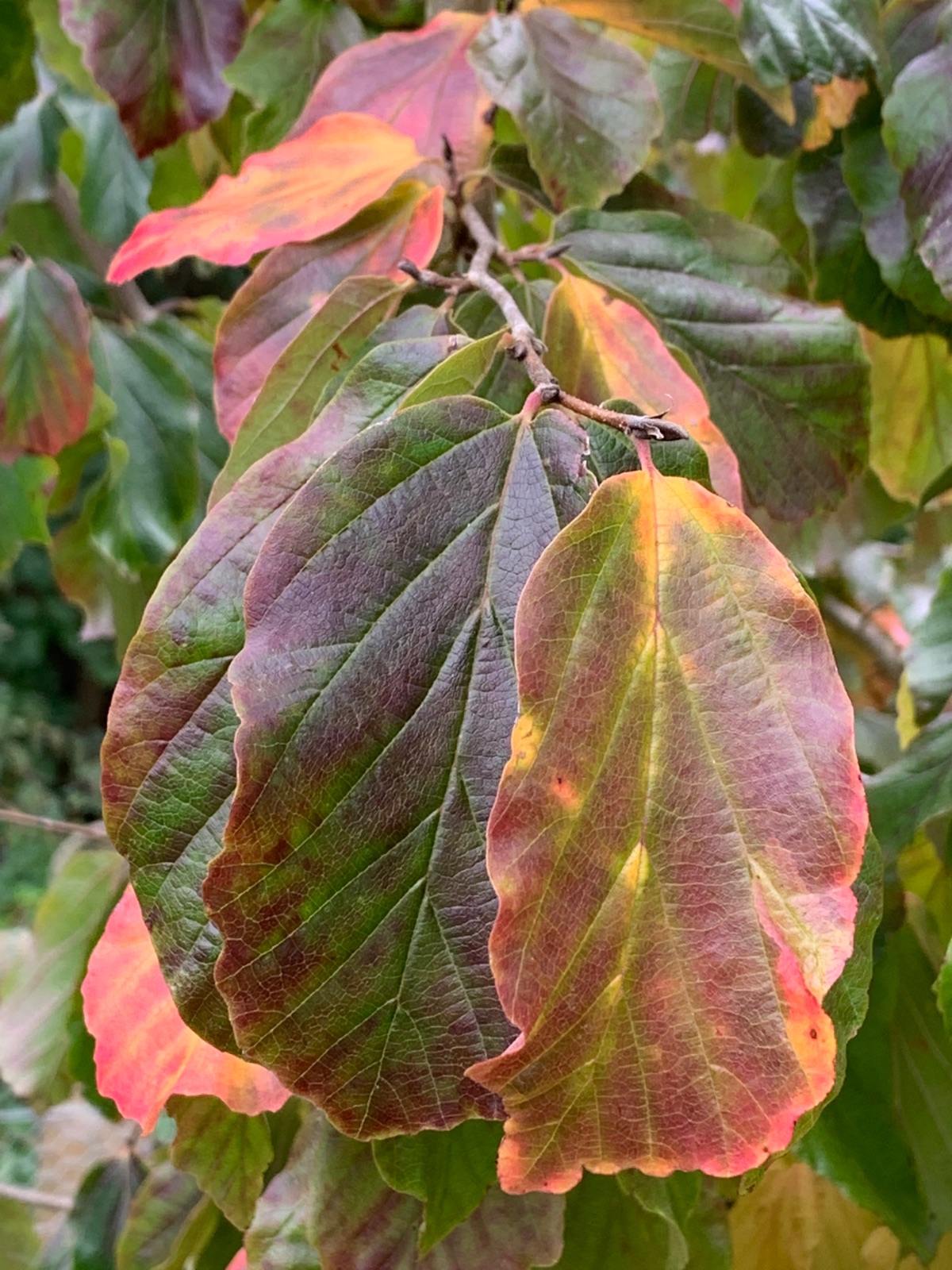Parrotia
Sponsor
Kindly sponsored by
This genus has been sponsored and new text is being prepared.
Credits
Article from Bean's Trees and Shrubs Hardy in the British Isles
Article from New Trees by John Grimshaw & Ross Bayton
Recommended citation
'Parrotia' from the website Trees and Shrubs Online (treesandshrubsonline.
Family
- Hamamelidaceae
Common Names
- Ironwoods
Parrotia is a genus of two species of deciduous trees or large shrubs: the familiar P. persica, originating from the Caspian forest of Iran and Azerbaijan, and the recently recognised P. subaequalis from China. The trunk is usually short and thick, producing thick, spreading to erect branches that form a twiggy crown; the branchlets pubescent when young. The alternate leaves are simple with dentate margins, the veins terminating in marginal teeth (craspedodromous venation), with stellate pubescence on both sides of the lamina, at least when young; the petioles are short; stipules caducous. The inflorescence is a terminal or axillary capitate spike with three to seven flowers surrounded by brown bracts. The flowers are either male or hermaphrodite, composed of 7–10 spirally arranged, irregularly sized sepals and the reproductive parts inserted onto a shallow floral cup or receptacle; there are no petals. The stamens, 5–15, have conspicuous anthers; the ovary is semi-inferior, with long styles. The fruit is a sessile, woody nut-like capsule with one seed in each locule, densely stellate-pubescent outside (Zhang et al. 2003b, Andrews 2008).
Parrotia persica is a justifiably popular garden tree, valued for its late winter flowers and its excellent autumn colours. Although the flowers have no petals the large anthers, which open from dark brown to pinkish red, contrive to make a pleasing show while the tree is in bloom. The usual form seen in cultivation is rather low, broad-spreading and shrub-like in shape, probably because the species has been propagated largely from individuals of this nature; trees raised from wild-collected seed give a much more upright and better-shaped plant, and are to be preferred wherever possible. Seed-raised trees also vary in their autumnal coloration, and good clones could be selected and named from those in cultivation. It is generally thought to prefer acidic soils, but is tolerant of alkaline conditions if the soil is reasonably deep and moist.
P. persica (DC.) C.A. Mey. B91, S352, K353
Bean’s Trees and Shrubs
Parrotia
A genus of a single deciduous species with alternate leaves and small flowers crowded in terminal, globose heads, subtended by several bracts. The flowers have no petals, but numerous stamens, which furnish their chief attraction. The nearest allied genera are Parrotiopsis (q.v. for the marks of distinction), Sycopsis, which is evergreen, and Fothergilla, which has no bracts beneath the head of flowers. The genus is named after the German F. W. Parrot, who made the first ascent of Mt Ararat in 1829.


